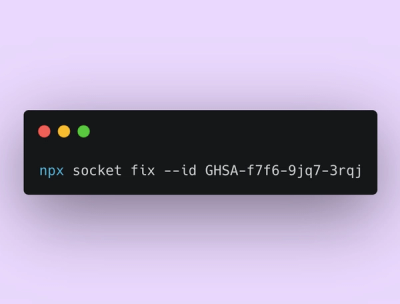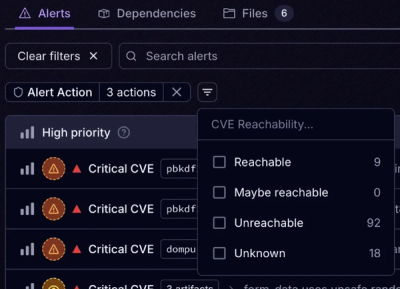
Product
Announcing Socket Fix 2.0
Socket Fix 2.0 brings targeted CVE remediation, smarter upgrade planning, and broader ecosystem support to help developers get to zero alerts.
Asent is a rule-based sentiment analysis library for Python made using SpaCy. It is inspired by Vader, but uses a more modular ruleset, that allows the user to change e.g. the method for finding negations. Furthermore, it includes visualizers to visualize model predictions, making the model easily interpretable.
Installing Asent is simple using pip:
pip install asent
There is no reason to update from GitHub as the version on pypi should always be the same of on GitHub.
The following shows a simple example of how you can quickly apply sentiment analysis using asent. For more on using asent see the usage guides.
import spacy
import asent
# create spacy pipeline
nlp = spacy.blank('en')
nlp.add_pipe('sentencizer')
# add the rule-based sentiment model
nlp.add_pipe("asent_en_v1")
# try an example
text = "I am not very happy, but I am also not especially sad"
doc = nlp(text)
# print polarity of document, scaled to be between -1, and 1
print(doc._.polarity)
# neg=0.0 neu=0.631 pos=0.369 compound=0.7526
Naturally, a simple score can be quite unsatisfying, thus Asent implements a series of visualizer to interpret the results:
# visualize model prediction
asent.visualize(doc, style="prediction")

If we want to know why the model comes the result it does we can use the analysis style:
# visualize the analysis performed by the model:
asent.visualize(doc[:5], style="analysis")

Where the value in the parenthesis (2.7) indicates the human-rating of the word, while the value outside the parenthesis indicates the value accounting for the negation. Asent also accounts for contrastive conjugations (e.g. but), casing, emoji's and punctuations. For more on how the model works check out the [usage guide].
| Documentation | |
|---|---|
| 🔧 Installation | Installation instructions for Asent |
| 📚 Usage Guides | Guides and instructions on how to use asent and its features. It also gives short introduction to how the models works. |
| 📰 News and changelog | New additions, changes and version history. |
| 🎛 Documentation | The detailed reference for Asents's API. Including function documentation |
| Type | |
|---|---|
| 🚨 FAQ | FAQ |
| 🚨 Bug Reports | GitHub Issue Tracker |
| 🎁 Feature Requests & Ideas | GitHub Issue Tracker |
| 👩💻 Usage Questions | GitHub Discussions |
| 🗯 General Discussion | GitHub Discussions |
FAQs
A python package for flexible and transparent sentiment analysis.
We found that asent demonstrated a healthy version release cadence and project activity because the last version was released less than a year ago. It has 1 open source maintainer collaborating on the project.
Did you know?

Socket for GitHub automatically highlights issues in each pull request and monitors the health of all your open source dependencies. Discover the contents of your packages and block harmful activity before you install or update your dependencies.

Product
Socket Fix 2.0 brings targeted CVE remediation, smarter upgrade planning, and broader ecosystem support to help developers get to zero alerts.

Security News
Socket CEO Feross Aboukhadijeh joins Risky Business Weekly to unpack recent npm phishing attacks, their limited impact, and the risks if attackers get smarter.

Product
Socket’s new Tier 1 Reachability filters out up to 80% of irrelevant CVEs, so security teams can focus on the vulnerabilities that matter.